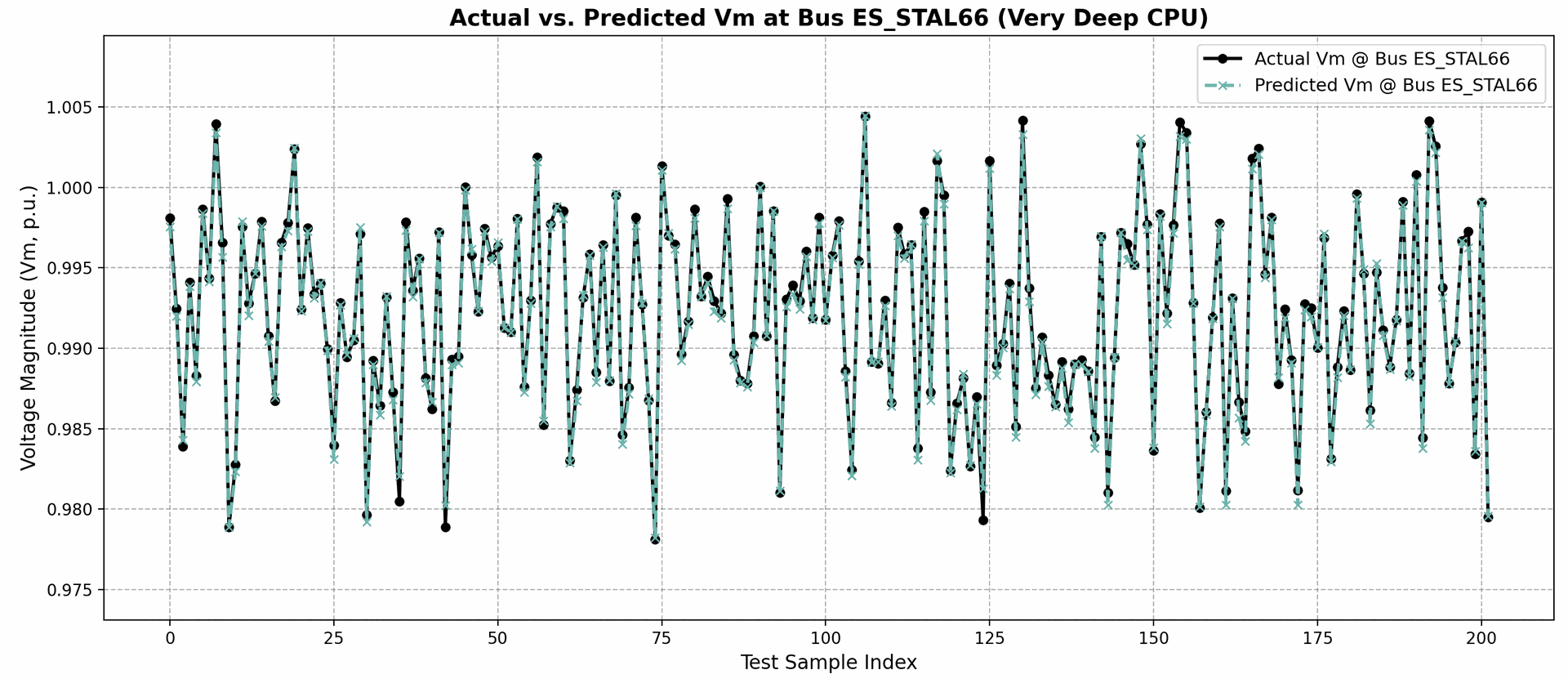Capturing the essence of the grid
At eRoots, we’re excited to share a new direction in our research and development: applying Graph Convolutional Networks (GCNs) to the analysis and operation of power systems.
What Are Graph Convolutional Networks?
Graph Convolutional Networks are a type of neural network designed to operate directly on graph-structured data. Unlike conventional neural networks, which process information in fixed formats like images or sequences, GCNs can model the relationships between elements that are interconnected in arbitrary ways—such as nodes and lines in a power grid.
In a GCN, each node aggregates information from its neighbors during training. This process, known as message passing, allows the model to learn not only from the node’s own features (such as voltage or power injection) but also from the structure and state of the surrounding network. Each layer of the network refines this understanding, enabling it to capture spatial and topological dependencies in the data. GCNs are especially powerful in domains like power systems, where the behavior of each element is influenced by the configuration and state of the entire network.
Why Use GCNs for Power Systems?
Traditional power system analysis relies on solving physical equations over a static network representation. While highly accurate, this approach does not fully account for the dynamic, nonlinear, and data-rich nature of today’s grids. In contrast, GCNs offer several key advantages:
- Modeling complex topologies and their influence on system behavior
- Predicting voltage and power flow distributions across the grid without solving full power flow equations
- Learning from both historical and real-time data, enabling faster and more adaptive decision support
- Scaling efficiently to large networks with frequently changing configurations (relevant for contingency analysis)
By capturing both the structure and behavior of power systems, GCNs unlock the potential for high-speed, data-driven analysis.
Toward Real-Time Intelligence
One of the most promising outcomes of using GCNs in power systems is their ability to provide fast, data-driven estimates of key electrical quantities, without the need for solving full power flow equations each time. To validate this, we benchmarked a GCN model against a traditional power flow solution on a test set involving a mid-size grid with one month of hourly data. The figure below shows the predicted vs actual voltage magnitudes (Vm) at a representative bus across 200 test samples.

The GCN model, trained on historical operating points, was able to closely replicate the results of conventional power flow calculations, achieving near-identical voltage magnitude estimates. This high level of accuracy demonstrates the model's ability to generalize to unseen grid conditions and infer system states with minimal delay. Importantly, inference with the trained GCN model takes only milliseconds per sample, making it a compelling option for fast estimation in use cases such as contingency analysis and Security-Constrained Optimal Power Flow (SCOPF), where a large number of scenarios must be evaluated rapidly.
Rather than replacing traditional simulations, GCN-based models act as efficient surrogates that can complement conventional methods by offering speed, scalability, and flexibility. Now imagine if you had access to both this and our full Iberian grid model. The potential for real-time situational awareness, proactive control strategies, and scalable simulation becomes even more powerful. This could bring us closer to a new standard in how power systems are analyzed and operated.
Looking Ahead
Our exploration of GCNs is part of a broader mission at eRoots to incorporate machine learning and data science into the core of power system engineering. By bridging deep learning with graph theory, we aim to provide smarter tools that reflect the true structure and dynamics of the electrical grid. We’re continuing to develop this work in parallel with our traditional simulation frameworks, creating hybrid methods that combine the best of both worlds.
If you're interested in learning more, collaborating, or testing these models on your own grid, we'd be happy to talk.